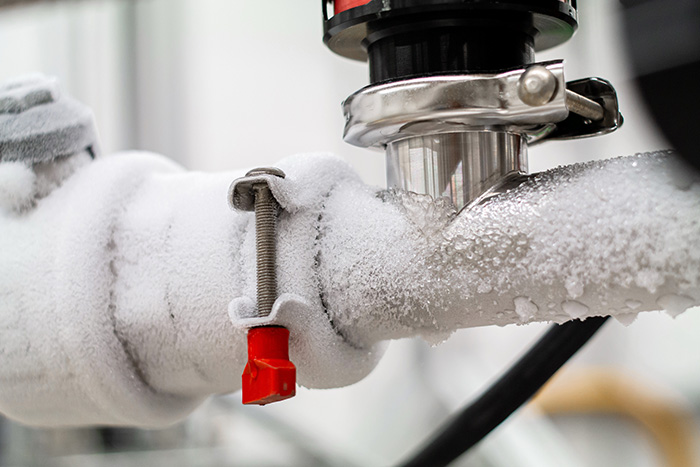Ways to Prevent Frozen Pipes in Cold Weather: Expert Advice
Ways to Prevent Frozen Pipes in Cold Weather: Expert Advice
Blog Article
This article in the next paragraphs pertaining to Helpful Tips to Prevent Frozen Pipes this Winter is extremely intriguing. Don't miss out on it.

Cold weather can damage your pipes, specifically by freezing pipelines. Below's just how to stop it from happening and what to do if it does.
Intro
As temperature levels decline, the threat of frozen pipelines increases, possibly leading to pricey repairs and water damages. Comprehending exactly how to stop icy pipes is important for home owners in chilly environments.
Comprehending Frozen Pipes
What causes pipelines to ice up?
Pipes freeze when revealed to temperature levels below 32 ° F (0 ° C) for extended durations. As water inside the pipes freezes, it expands, putting pressure on the pipe wall surfaces and possibly triggering them to rupture.
Risks and damages
Icy pipes can cause water system disturbances, residential or commercial property damages, and costly repair work. Ruptured pipes can flooding homes and cause substantial architectural damage.
Signs of Frozen Pipeline
Recognizing icy pipes early can stop them from breaking.
How to recognize frozen pipelines
Look for reduced water circulation from faucets, unusual odors or noises from pipelines, and visible frost on subjected pipelines.
Avoidance Tips
Protecting prone pipes
Cover pipelines in insulation sleeves or utilize heat tape to secure them from freezing temperatures. Concentrate on pipes in unheated or outside areas of the home.
Heating techniques
Keep interior areas appropriately heated up, specifically locations with pipes. Open cabinet doors to enable warm air to distribute around pipes under sinks.
Protecting Exterior Plumbing
Garden tubes and outside taps
Disconnect and drain pipes yard hose pipes prior to winter. Set up frost-proof faucets or cover outdoor faucets with shielded caps.
What to Do If Your Pipes Freeze
Immediate actions to take
If you presume icy pipes, keep faucets open up to ease stress as the ice thaws. Use a hairdryer or towels soaked in hot water to thaw pipes gradually.
Long-Term Solutions
Architectural changes
Think about rerouting pipelines far from outside wall surfaces or unheated locations. Add additional insulation to attics, basements, and crawl spaces.
Upgrading insulation
Purchase premium insulation for pipelines, attic rooms, and walls. Proper insulation aids preserve constant temperature levels and lowers the risk of frozen pipes.
Final thought
Stopping icy pipelines requires aggressive procedures and fast responses. By comprehending the causes, indicators, and preventive measures, house owners can safeguard their pipes throughout winter.
5 Ways to Prevent Frozen Pipes
Drain Outdoor Faucets and Disconnect Hoses
First, close the shut-off valve that controls the flow of water in the pipe to your outdoor faucet. Then, head outside to disconnect and drain your hose and open the outdoor faucet to allow the water to completely drain out of the line. Turn off the faucet when done. Finally, head back to the shut-off valve and drain the remaining water inside the pipe into a bucket or container. Additionally, if you have a home irrigation system, you should consider hiring an expert to clear the system of water each year.
Insulate Pipes
One of the best and most cost-effective methods for preventing frozen water pipes is to wrap your pipes with insulation. This is especially important for areas in your home that aren’t exposed to heat, such as an attic. We suggest using foam sleeves, which can typically be found at your local hardware store.
Keep Heat Running at 65
Your pipes are located inside your walls, and the temperature there is much colder than the rest of the house. To prevent your pipes from freezing, The Insurance Information Institute suggests that you keep your home heated to at least 65 degrees, even when traveling. You may want to invest in smart devices that can keep an eye on the temperature in your home while you’re away.
Leave Water Dripping
Moving water — even a small trickle — can prevent ice from forming inside your pipes. When freezing temps are imminent, start a drip of water from all faucets that serve exposed pipes. Leaving a few faucets running will also help relieve pressure inside the pipes and help prevent a rupture if the water inside freezes.
Open Cupboard Doors
Warm your kitchen and bathroom pipes by opening cupboards and vanities. You should also leave your interior doors ajar to help warm air circulate evenly throughout your home.

I was guided to that report about Preventing and dealing with frozen pipes from a pal on a different web property. Enjoyed reading our post? Please share it. Let other people check it out. Thanks for your time invested reading it.
Schedule Now Report this page